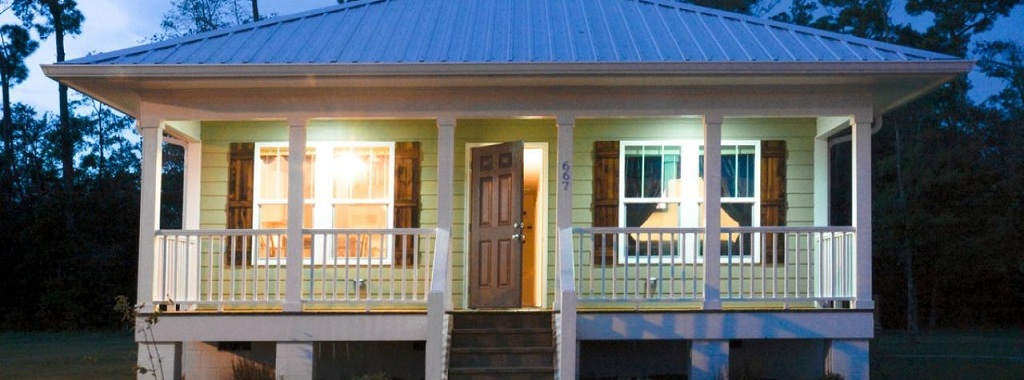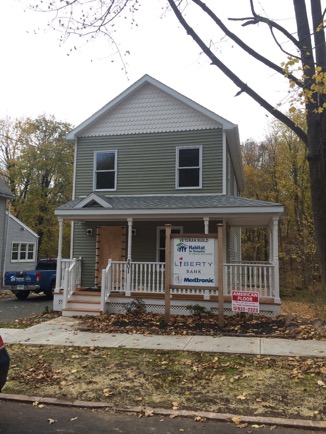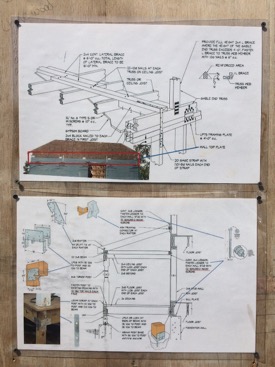This week’s post was written by Kevin Gobble of Habitat for Humanity. Kevin is the Program Manager for Habitat for Humanity’s new Habitat Strong initiative. Kevin has spent over 22 years in residential construction building energy-efficient, high-performing home, and has consulted with several sustainable building programs on ways to develop their own best practices. As a third-generation builder, he has knowledge in the field of residential building science and has furthered his education to include many industry certifications — NARI Certified Remodeler, NAHB Certified Green Professional, RESNET Certified Green Rater, BPI Building Analyst, FORTIFIED evaluator, and Level 1 Infrared Thermography — while working directly with industry partners to focus on cost-effective construction solutions. Kevin has built and remodeled numerous homes to high-performance standards as certified by various building programs, including his latest project for himself: converting a condemned historic property in Atlanta to EarthCraft House Platinum.
In a previous blog post, we discussed the background of the Habitat Strong program. Habitat Strong promotes the building of resilient homes that are better equipped to withstand natural disasters in every region of the country. This program uses IBHS FORTIFIED Home™ standards and works well within Habitat’s model of building affordable, volunteer-friendly homes.
Project Spotlight – Habitat for Humanity New Haven, CT
Habitat for Humanity New Haven’s innovative approach to building a traditional New England– style home with modern improvements began with a design from an historic home they rehabilitated years ago. The original was an old Winchester factory worker home, but the style was adapted to fit the narrow lots and surviving character of New Haven. Along with the design shift, the plans were standardized to incorporate FORTIFIED Gold techniques and practices for hurricanes.
New Haven has fully embraced FORTIFIED building practices following Superstorm Sandy. They have completed eight FORTIFIED Gold homes to date with three more under construction, perfecting their techniques as they go. An example to other Habitat affiliates, they have provided a model for using affordable construction methods and volunteers. They have also created a positive impact on their community by sharing their knowledge with other builders in the area.
“Improving the roof is a no-brainer, and it makes sense to tape the plywood seams,” noted construction manager Antoine Claiborne. Habitat has gone one step further by using the ZIP system on the roof for safety and durability improvements. This eliminates the need to nail down the underlayment every six inches o.c. along the edge and in the field, which can prove difficult for volunteers.
In addition to employing these roof techniques, New Haven uses Simpson Strong-Tie connectors (after re-engineering plans) to meet these new guidelines and to create a continuous load path. To promote ease of use for new volunteers, an advanced framing center is set up onsite, using diagrams and videos to demonstrate how the process works and what to expect. Documentation is another key to the FORTIFIED process – in New Haven’s case, the onsite construction manager documents all the FORTIFIED elements.
For opening protection, New Haven uses pressure-rated doors with Hurricane Fabric for impact protection as well as impact-rated windows. It was recently discovered that impact windows can shatter in a small area if hit there while otherwise remaining intact. Thus there’s a need to use caution when mowing grass where there are small rocks near the home.
How can you help? Contact Habitat for Humanity if you would like to donate or volunteer. If you have engineering expertise you can lend, I would love to hear from you at HabitatSTRONG@habitat.org.




